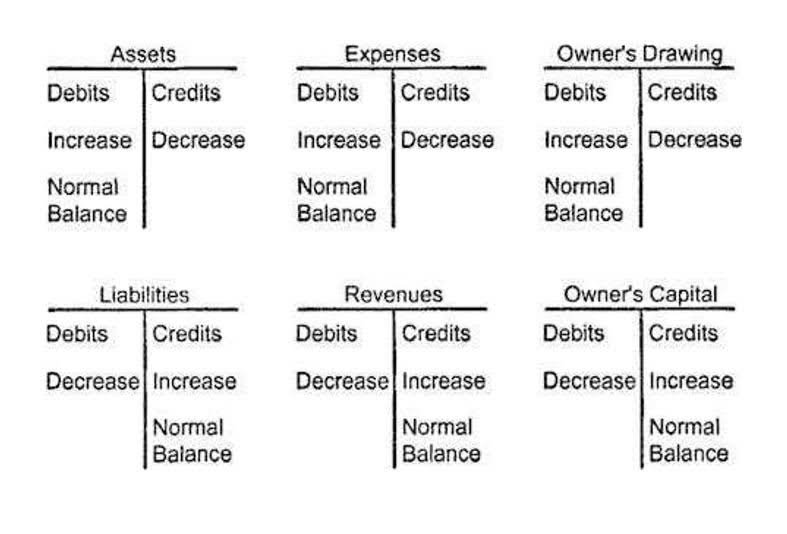
When the total assets of a business increase, then its total liabilities or owner’s equity also increase. Like any mathematical equation, the accounting equation can be rearranged and expressed in terms of liabilities or owner’s equity instead of assets. The accounting equation’s left side represents accounting basic formula everything a business has (assets), and the right side shows what a business owes to creditors and owners (liabilities and equity). Before explaining what this means and why the accounting equation should always balance, let’s review the meaning of the terms assets, liabilities, and owners’ equity.
- A current asset is cash or something that can easily be converted to cash, such as accounts receivable and short-term investments.
- Regardless of how the accounting equation is represented, it is important to remember that the equation must always balance.
- For example, the inventory turnover ratio would be significantly important to a retailer but with almost no significance to a boutique advisory firm.
- Accounts payable and accounts receivable are both accrual types.
- The 500 year-old accounting system where every transaction is recorded into at least two accounts.
- Before explaining what this means and why the accounting equation should always balance, let’s review the meaning of the terms assets, liabilities, and owners’ equity.
What are the different types of accountants?

It’s called the Balance Sheet (BS) because assets must equal liabilities plus shareholders’ equity. If an accounting equation does not balance, it means that the accounting transactions are not properly recorded. The combined balance of liabilities and capital is also at $50,000. When a company purchases goods or services from other companies on credit, a payable is recorded to show that the company promises to pay the other companies for their assets. Metro Courier, Inc., was organized as a corporation on January 1, the company issued shares (10,000 shares at $3 each) of common stock for $30,000 cash to Ron Chaney, his wife, and their son.
What Are the Key Components in the Accounting Equation?
The basic concept of accounting equation is to express two main points in the accounting rule. Accounting equation is the foundation of the double-entry in the accounting system which accounting transactions must follow. It is usually considered the most https://www.bookstime.com/articles/quickbooks-accountant fundamental concept in the accounting system. Apple pays for rent ($600) and utilities ($200) expenses for a total of $800 in cash. Non-current assets or liabilities are those that cannot be converted easily into cash, typically within a year, that is.
Basic Accounting Terminology and Concepts

For example, revenue is used to establish the datapoint comprising the “sales” component of a price-to-sales calculation. However, not all business owners have the time or means to pursue formal training. Students sometimes enter accounting programs with little technical knowledge. This guide serves as an easy-to-use resource for developing the vocabulary used by accounting professionals. So, if you really understand this equation, the rest of accounting becomes that much easier.

How to Prepare Financial Statements
The company acquired printers, hence, an increase in assets. Transaction #3 results in an increase in one asset (Service Equipment) and a decrease in another asset (Cash). During the month of February, Metro Corporation earned a total of $50,000 in revenue from clients who paid cash. This number is the sum of total earnings that were not paid to shareholders as dividends.
- The net income equation, then, shows you how profitable your business’ operations are, but not how healthy your cash flow is.
- Because there are two or more accounts affected by every transaction carried out by a company, the accounting system is referred to as double-entry accounting.
- These elements are basically capital and retained earnings; however, the expanded accounting equation is usually broken down further by replacing the retained earnings part with its elements.
- We use owner’s equity in a sole proprietorship, a business with only one owner, and they are legally liable for anything on a personal level.
- When an investor incurs a loss, the ROI is expressed as a negative number.
- Accounting involves recording, classifying, organizing, and documenting financial transactions and data for internal tracking and reporting purposes.
- This business transaction increases company cash and increases equity by the same amount.
- As you can see, shareholder’s equity is the remainder after liabilities have been subtracted from assets.
- Therefore, dividends are excluded when determining net income (revenue – expenses), just like stockholder investments (common and preferred).
- Importantly, it also covers relevant etymologies and word histories in cases where knowledge of these elements can help you better understand the term.
